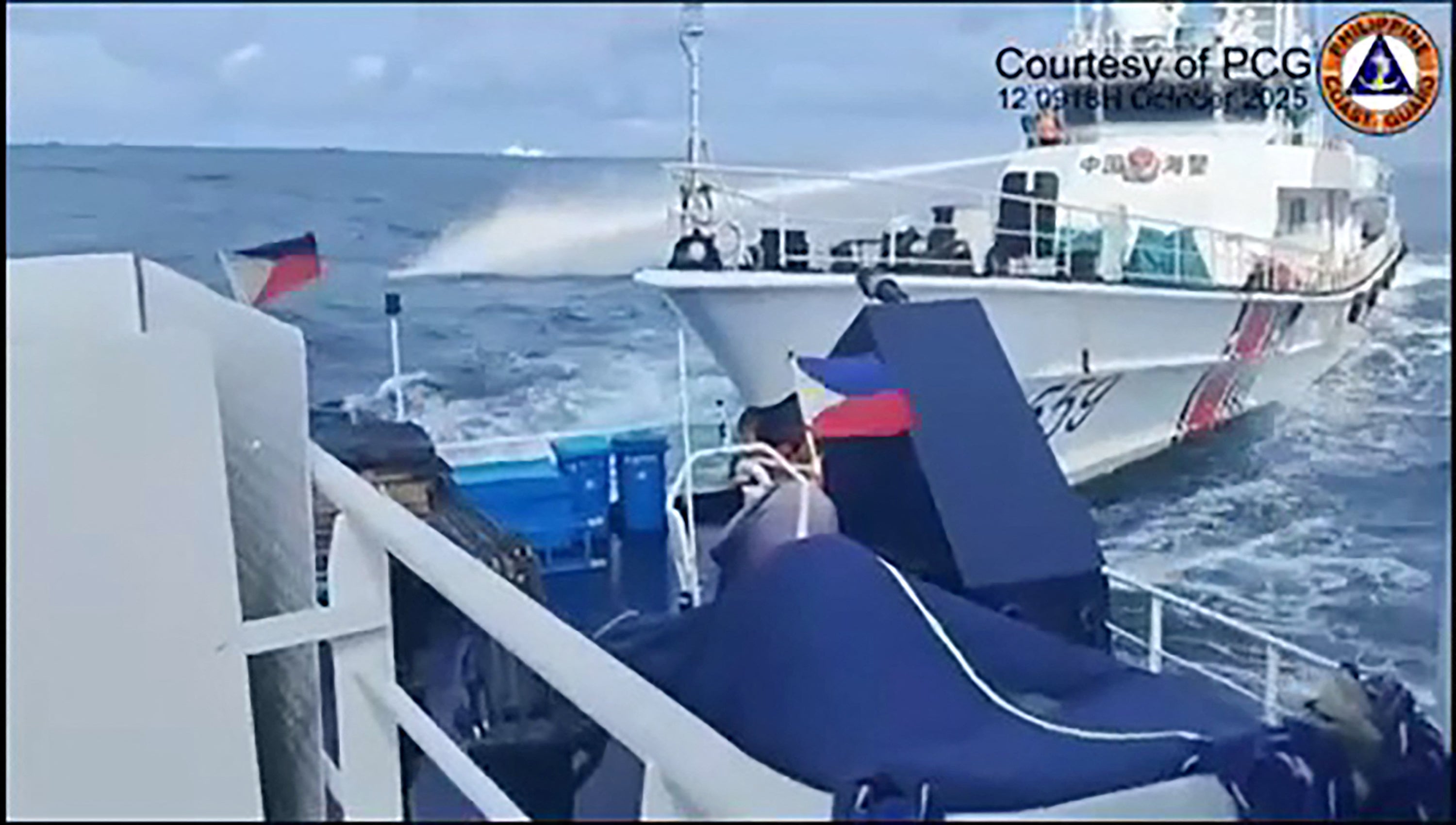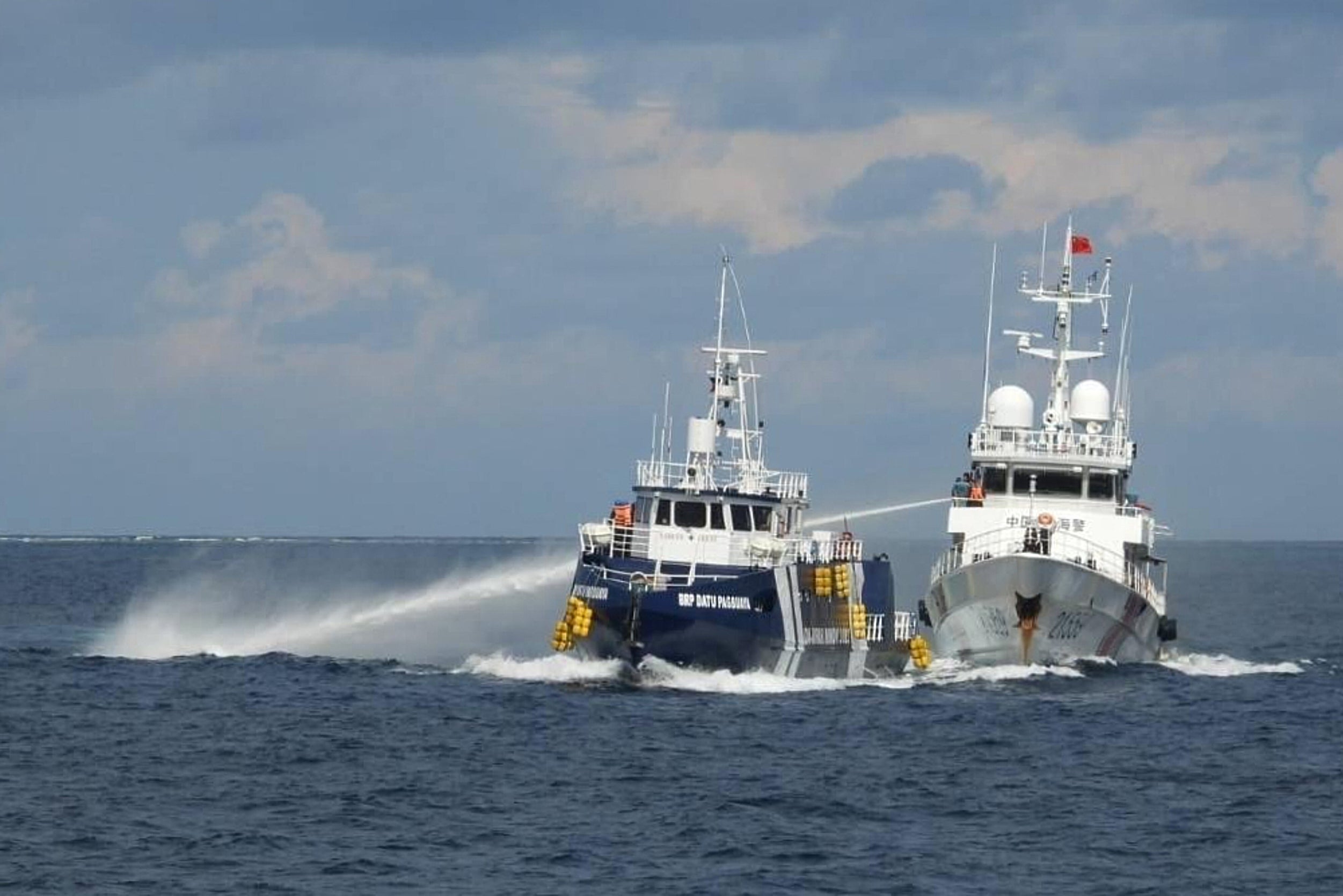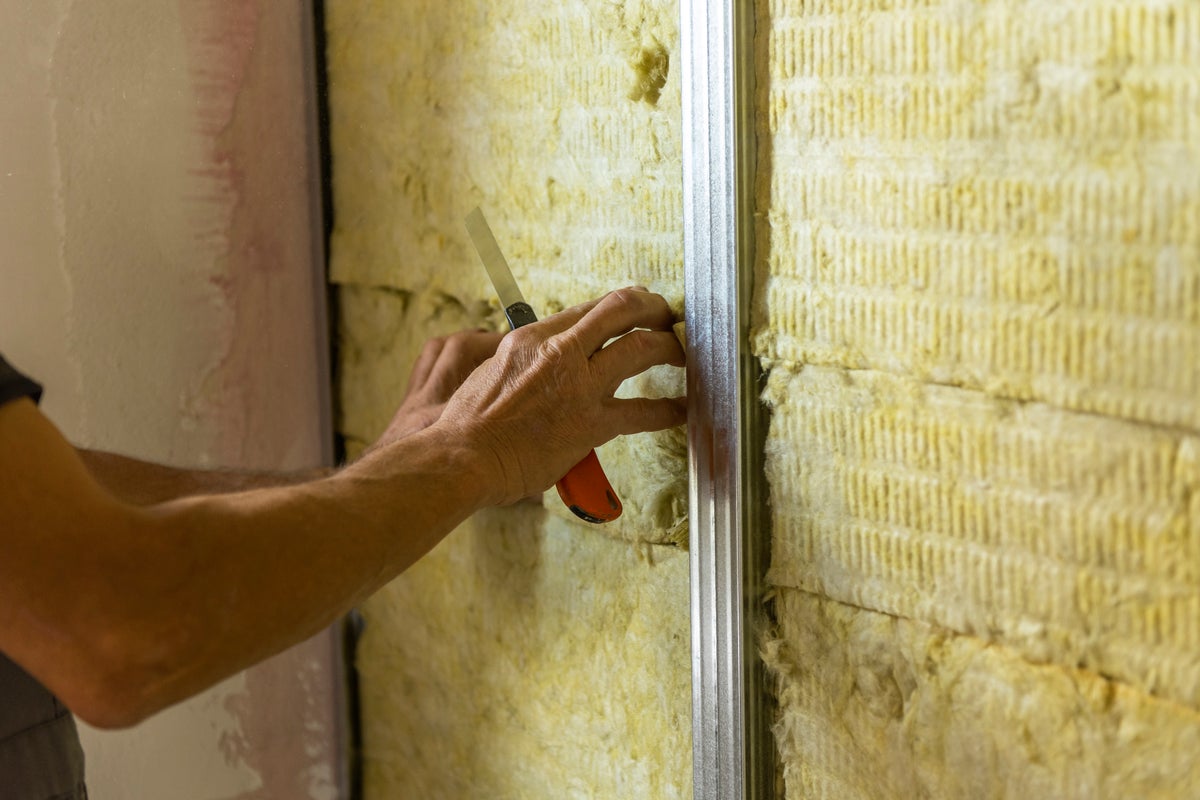A Chinese coast guard vessel reportedly deployed a powerful water cannon and subsequently rammed a Philippine government ship on Sunday, causing minor damage to the anchored vessel near a Filipino-inhabited island in the disputed South China Sea.
The BRP Datu Pagbuaya, a vessel from the Philippines' fisheries fleet, sustained slight damage, though no injuries were reported among its Filipino crew members.
This incident, occurring off Thitu island – known as Pag-asa by the Philippines – represents the latest escalation in the protracted territorial disputes involving Manila, Beijing, and four other governments in the region.
While China has not yet issued a direct response to the incident, it consistently reiterates its claim of sovereignty and control over virtually the entire South China Sea, a crucial global trade route.
This stance is maintained despite a 2016 international arbitration ruling that invalidated its historic claims, a decision China rejects but which is supported by the United States and its Western and Asian allies.
According to Philippine coast guard spokesperson Commodore Jay Tarriela, the Pagbuaya and two other Bureau of Fisheries and Aquatic Resources vessels were anchored in Thitu's territorial waters when Chinese coast guard and suspected militia ships initiated "dangerous and provocative maneuvers."

Commodore Tarriela firmly stated that such aggression would not prompt Manila to "surrender a square inch of our territory to any foreign power."
A Chinese coast guard ship with bow number 21559 “fired its water cannon directly at the BRP Datu Pagbuaya, hitting the vessel,” then rammed the stern of the Philippine fisheries vessel three minutes later, causing “minor structural damage but no injuries to the crew.”
Video issued by the Philippine coast guard shows a Chinese coast guard ship firing a water cannon, hitting the vessel and its two Philippine flags. The Filipino-manned ship is seen moving away from the Chinese coast guard ship.
“Despite these bullying tactics and aggressive actions, the Philippine coast guard and the Bureau of Fisheries and Aquatic Resources remain resolute,” Tarriela said. “We will not be intimidated or driven away.”
“The harassment we faced today only strengthens our resolve,” Philippine coast guard commandant Admiral Ronnie Gil Gavan said.

“Filipino fisherfolk depend on these waters and neither water cannons nor ramming will deter us from fulfilling our commitment to Pres. Ferdinand Marcos to not surrender a square inch of our territory to any foreign power.”
Thitu is the largest of nine islands, islets and reefs inhabited by Philippine forces and also has a fishing community in the Spratlys archipelago, the most fiercely disputed region of the South China Sea, where China turned seven barren reefs into island bases protected by a missile system.
Three of the artificial islands have runways, including Subi, which lies just more than 20 kilometers (12 miles) from Thitu, which China also claims.
The latest territorial faceoff in the South China Sea adds to domestic emergencies being dealt with by the Marcos administration, including recent earthquakes, which left more than 80 people dead in the central and southern Philippines and back-to-back typhoons that devastated the same regions.

.jpeg)

















.jpeg)













 English (US) ·
English (US) ·